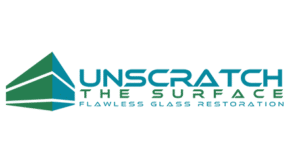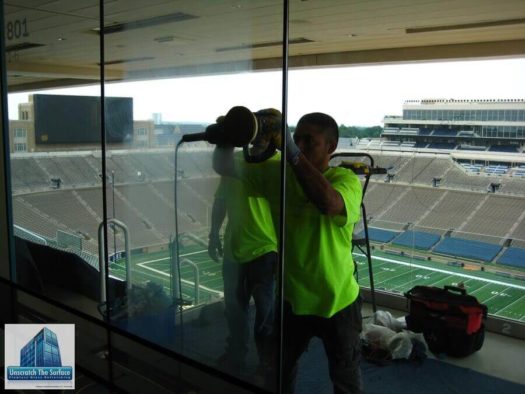How To Find The Best Glass Scratch Removal
What Makes The Best Glass Scratch Removal?
Effective Glass Scratch Remover – What it takes
Scratched glass repair seems like a pretty straightforward concept: you have a damaged pane of glass, and you polish it, buff it, grind it, whatever. Easy, right? But have you ever stopped to consider how that last part might actually get done? There are do-it-yourself videos across the internet that will fill your head with myths about what really is an effective glass scratch remover with everything from baking soda and lemon juice to clear nail polish to banana peels.
My personal favorite is using toothpaste to repair glass scratches! It might work to an extent but it would take a long, long time. One thing we noticed a long time ago is that the longer you are grinding or even polishing a glass surface, the greater the chance of causing an uneven surface and distortion. This is because even when polishing glass, you are still removing glass from the surface. There are really only a few ways to fix scratched glass, and none of them deliver professional results and are not readily available to the average DIY- er.
A scratch in glass can be viewed as a sudden change in the thickness of a pane of glass. If you want to fix the scratch, you have to even out that sudden change. You can do that by bringing the bottom of the scratch up to be even with the rest of the pane, or by grinding the rest of the pane down so that it’s at the same thickness as the bottom of the scratch.
Another method, which was popular up until about 2005 involves one of a variety of methods of only polishing the glass. The most often seen is with a slurry (SRP) machine, which creates a vacuum over the glass and then polishes it with particulate mixed in with fast-running cold water.
If the cerium slurry mixture gets over 95 degrees, the polishing effects are minimized greatly. Running water must lubricate the surface of the glass so this bulky machine can keep moving freely. That’s not much of a problem if the damage is outdoors. However, if you’re working in a custom home with beautiful hardwood floors, you can’t be allowing the wood to get soaked with the running water.
You better make sure you have plenty of large absorbent towels around! The vacuum supposedly keeps out unwanted contaminants, the water keeps the glass and the abrasive from overheating due to friction, and the abrasive particulate slowly wears the glass down. thereby polishing it. But at the same time, the glass particles and glass fines that are being removed enter into the slurry solution.
And additionally, this technology is bulky, loud, cumbersome and is 40+ years old! Would you want to be using a 40-year-old tool when new and better tools have been developed? This technology is like one of those old “eggbeater” drills! Not something I would want to build a house with! No significant changes in the glass restoration industry had been seen until about 2005, spearheaded by Unscratch the Surface.
Problems with repairing glass scratches the “cerium slurry” way include the huge mess it leaves behind and the fact that it’s virtually impossible to do it without leaving behind visible distortion in the glass. Additionally, the process is incredibly slow.
The first method — bringing the bottom of the scratch up to the level of the top — is where the clear nail polish scratch repair myth comes in. Fill up the scratch with that, they say, and you’re good. Sounds good in theory except for one big problem. The refractive index of nail polish and glass are completely different. If you were to make a thick layer of clear nail polish alone, it would not be clear like glass. It would appear wavy, distorted, and uneven.
Also, this method, if it actually worked, would only work on very deep scratches in the glass. The reason for this is that shallow scratches don’t allow the nail polish any surface to “bite” into. There’s no way it would stick in the scratch. Therefore, this method would not work on the most common type of scratching in glass, the scratches caused by fabricating debris, causing scratched tempered glass. These tend to be light scratches covering a widespread surface and are most visible in light when the sun is low on the horizon or filtered through trees.
With the ever-increasing demand for tempered, laminated, and hurricane glass, there has also seen a demand for tempered glass resurfacing. This is simply unrealistic using an old slurry machine. Whenever restoring glass, it’s imperative to do everything uniformly or else glass distortion ensues. Real scratched glass professionals always grind or abrade the damage out of your glass. This is done in an even, aggressive manner to assure uniformity.
Also, professionals utilize a rapid polishing method. Results should be rapid on every step in glass resurfacing. If results are not rapid and uniform, the final result will be distorted glass or swirls and haze. With an effective scratched glass professional, there’s no distortion because the glass has been resurfaced evenly.
Moreover, there’s none of the weakness if the deep scratches were left to remain, and none of the mess left behind by the slurry machine. Grind and polish are really is the best method of getting your glass scratches removed. Look for a company that has experience in resurfacing tempered windows and doors, and can do so without leaving any discernible distortion.
Then you’ll know you’re dealing with a real glass scratch remover! Make sure they will stand behind, even their glass scratch demo. If they are confident in their ability, they will gladly agree to replace your glass if they leave any distortion. If they will not, do not let them experiment with your scratched glass. Chances are good that they are new and don’t know what they’re doing.
If you’re in the need for the company that is the “meticulous perfectionists of glass restoration”, then give us a call. We know how to restore scratched glass, quickly and flawlessly. We can make your scratched glass look new, guaranteed. Our track record speaks volumes about our experience in the glass resurfacing industry. Specialists in high end, high volume projects, the Effective Glass Scratch Remover. Contact us for more information.
“When Your View Matters – Call Unscratch!” 805-295-9020
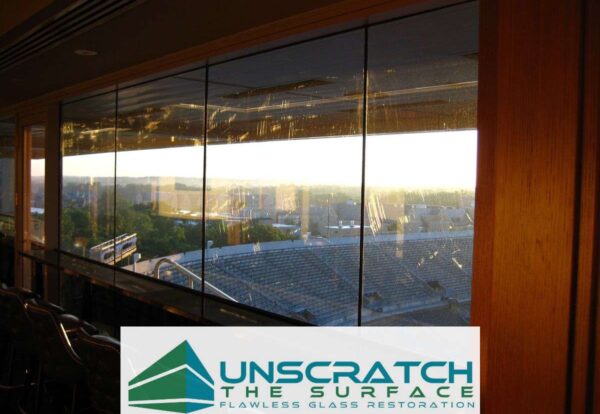

Tempered Glass Resurfacing
Tempered glass, also called safety glass, works by creating a tension layer that will shatter into many small pieces if the glass is broken.
Read more

Tempered Glass Resurfacing
Tempered glass, also called safety glass, works by creating a tension layer that will shatter into many small pieces if the glass is broken.
Read more
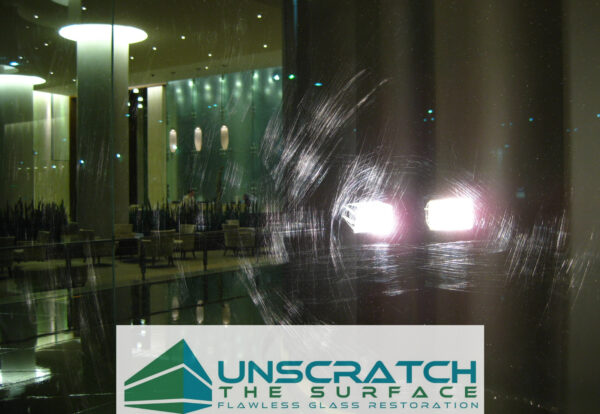

Fabrication Debris Scratch Removal
Unscratch The Surface is the only company that can solve your problem of excessive scratches on tempered glass with a “No Distortion” guarantee!
Read more

Fabrication Debris Scratch Removal
Unscratch The Surface is the only company that can solve your problem of excessive scratches on tempered glass with a “No Distortion” guarantee!
Read more
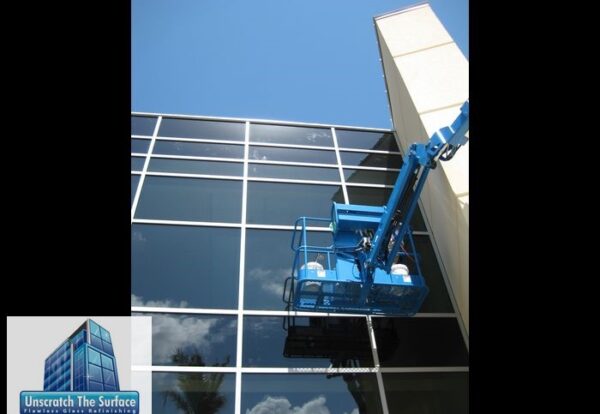

Hard Water Stain Removal
Hard water spots or stains, also known as lime scale buildup is just that. Minerals that are in the water that remain on the glass…
Read more

Hard Water Stain Removal
Hard water spots or stains, also known as lime scale buildup is just that. Minerals that are in the water that remain on the glass…
Read more
